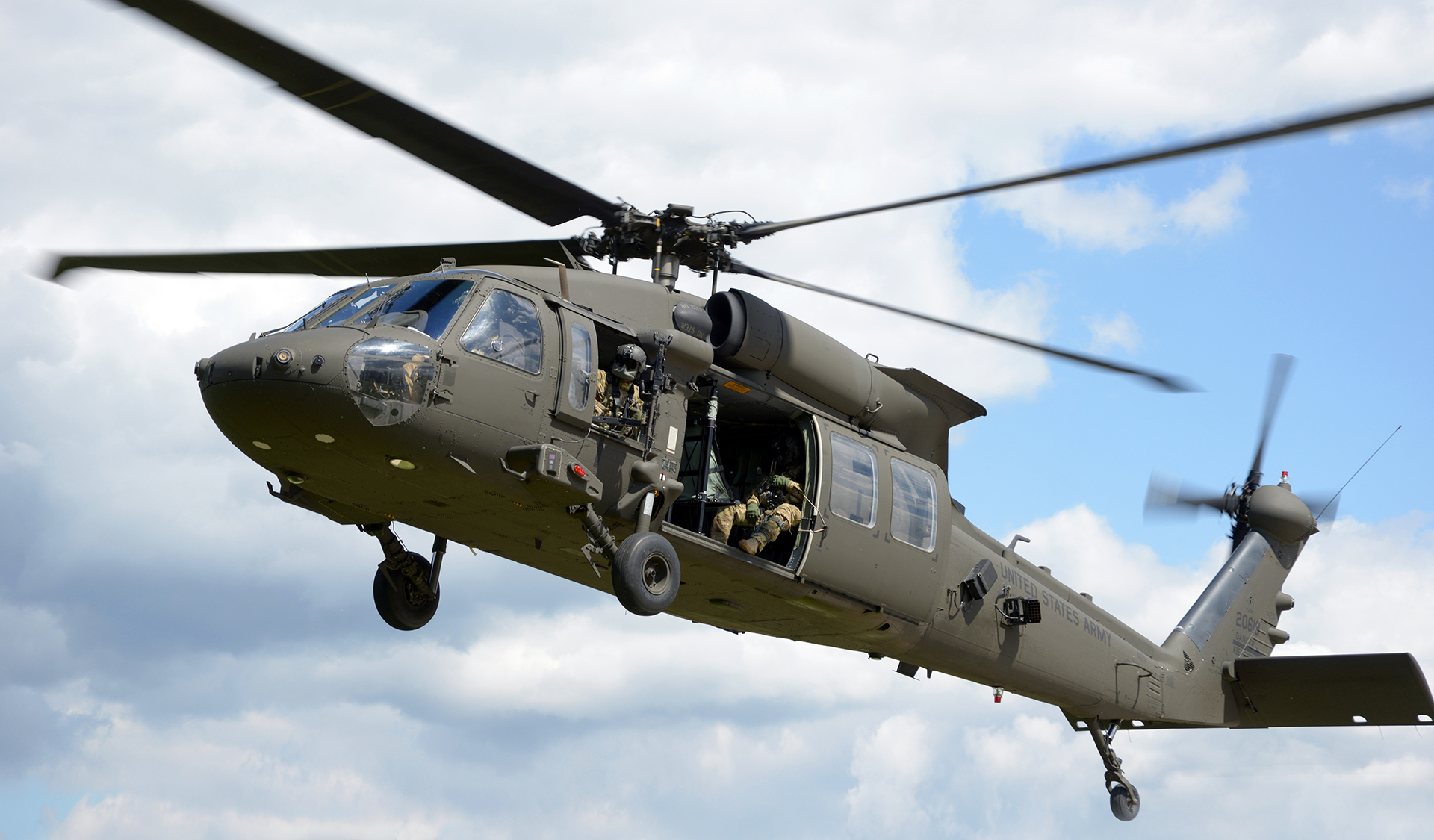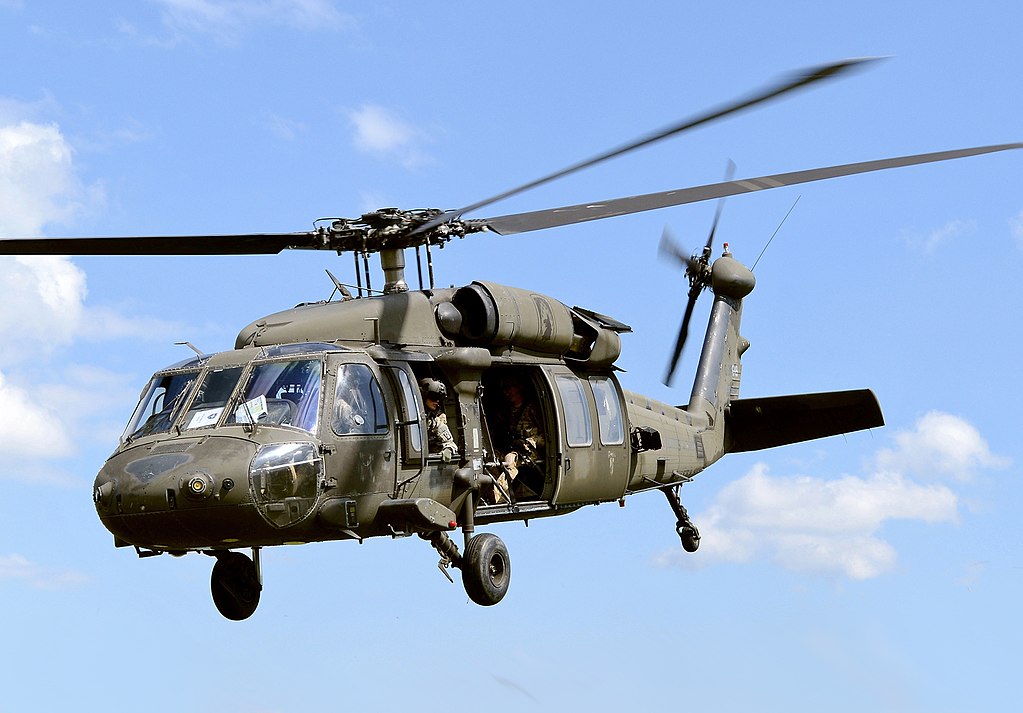UH-60: Advancements in Modern Helicopter Style
The UH-60 helicopter stands as a criteria in contemporary air travel, showcasing significant developments in style and innovation that deal with the evolving needs of armed forces operations. Its consolidation of advanced materials not just improves performance but also addresses critical safety and security worries. Moreover, the integration of advanced avionics has changed operational capacities, enabling greater situational recognition and decision-making effectiveness. As we check out the advancement and crucial developments of the UH-60, it comes to be necessary to consider exactly how these growths influence not just current applications however additionally the future landscape of helicopter design.

Development of the UH-60
The evolution of the UH-60 Black Hawk helicopter stands for a substantial turning point in aerospace engineering and army aeronautics. Introduced in the late 1970s, the UH-60 was designed by Sikorsky Airplane to satisfy the USA Military's need for a functional energy helicopter with the ability of doing a range of goals. Its style highlighted speed, sturdiness, and maneuverability, setting brand-new standards for functional performance.
The UH-60 includes a distinctive four-blade rotor system, which boosts lift and stability, allowing it to run efficiently in varied environments. Its airframe is built from advanced composite materials, adding to a reduction in weight while preserving architectural integrity. The helicopter's style also integrates better aerodynamics, which improves gas performance and enhances variety.
For many years, the Black Hawk has gone through numerous upgrades to boost its capabilities, including enhanced engines, progressed trip control systems, and modular systems for easy maintenance and versatility. The helicopter's capacity to perform missions varying from army transport to medical emptying has actually strengthened its duty as a foundation of united state military operations. The UH-60 Black Hawk remains a prime instance of exactly how innovation in helicopter design can significantly influence army effectiveness and operational adaptability.
Advanced Avionics Systems
Advancements in avionics systems have changed the capabilities of modern-day helicopters like the UH-60 Black Hawk, enhancing operational performance and situational understanding (UH 60). The assimilation of sophisticated avionics enables for enhanced interaction, navigating, and flight management, making the UH-60 more functional in varied goal accounts
Among the crucial functions is the advanced digital cabin, which utilizes multifunction screens that offer real-time data, making certain pilots have prompt accessibility to important flight information. This streamlining of details decreases pilot work and enhances decision-making procedures throughout complicated operations. Additionally, the unification of general practitioner and inertial navigation systems enables specific positioning and path planning, boosting objective execution in tough environments.
Moreover, progressed avionics systems improve communication abilities through safe and secure information links and voice interaction systems, allowing smooth sychronisation with ground forces and various other aircraft. The assimilation of automatic trip control systems even more contributes to improved security and control, especially in adverse weather or during low-altitude maneuvers.
Engine and Efficiency Enhancements
Engine performance in contemporary helicopters has actually taken a considerable jump forward, driven by technologies that increase efficiency, dependability, and power. At the forefront of these improvements is the adoption of even more effective turboshaft engines, particularly those utilizing innovative products and technologies that allow greater temperature level tolerances and enhanced thrust capacities. The UH-60 Black Hawk, for example, utilizes the T700-GE-701C engine, which features a dual-channel, full-authority digital engine control system. This system boosts efficiency while optimizing fuel consumption and minimizing upkeep demands.
Moreover, the my response combination of engine health and wellness tracking systems permits for real-time diagnostics and anticipating maintenance, substantially enhancing operational reliability. These systems not only sharp staffs to prospective problems before they become crucial but also facilitate extra reliable upkeep scheduling, thereby reducing downtime.

Products and Structural Innovations
Current developments in materials and structural design have changed modern helicopter construction, improving both performance and toughness. The intro of innovative composite products, such as carbon fiber enhanced polymers, has actually dramatically lowered weight while keeping structural honesty. This shift not only enhances fuel performance but likewise enhances haul ability, enabling helicopters like the UH-60 to carry out more diverse missions.
Additionally, innovations in light weight aluminum alloys and titanium elements have added to enhanced resistance to corrosion and exhaustion, expanding the life expectancy of crucial airframe elements. The critical usage of these materials has actually caused a reduction in upkeep demands and enhanced general operational preparedness.

Furthermore, the integration of computer-aided style (CAD) and additive production innovations has actually allowed extra lightweight frameworks and complex geometries, enhancing the wind resistant performance of helicopter styles. These advancements assist in quick prototyping and production, enabling manufacturers to respond quickly to evolving objective demands.
Safety and Survivability Functions
Safety and security and survivability features in modern helicopter style have actually become critical, mirroring the raising needs for mission effectiveness in difficult settings. The UH-60 Black Hawk, a notable example, integrates sophisticated modern technologies to boost crew and passenger security. One of one of the most critical developments is the consolidation of crashworthy fuel systems created to decrease the threat of fire throughout impact. Additionally, the airframe is constructed with reinforced materials that dissipate and absorb energy, further safeguarding residents in the event of an accident.
The helicopter likewise why not try here employs a ballistic defense system, which consists of armored crew seats and vital systems securing, reducing vulnerability to small arms fire and shrapnel. Enhanced situational understanding is accomplished with sophisticated avionics and sensing unit innovations, allowing pilots to detect and stay clear of dangers efficiently.
Moreover, the assimilation of redundancy in important systems-- such as double engines and multiple trip control channels-- ensures continued procedure even if one system fails. The UH-60 is furnished with sophisticated emergency situation flotation protection devices, boosting survivability in water landings. Jointly, these functions not just enhance the safety of personnel yet likewise increase objective success rates in hostile environments, demonstrating the dedication to excellence in helicopter layout.
Final Thought
The UH-60 helicopter stands for a considerable improvement in modern air travel technology, integrating cutting-edge materials, sophisticated avionics, and robust safety and security features. Its development mirrors a commitment to improving efficiency and functional efficiency while making certain pilot and staff survivability. The assimilation of light-weight compounds and advanced navigation systems highlights the helicopter's adaptability in various military goals. Overall, the UH-60 acts as a standard for future growths in helicopter style, symbolizing resilience and versatility in modern military operations.
The UH-60 helicopter stands as a standard in modern air travel, showcasing considerable advancements in style and modern technology that cater to the advancing demands of military procedures. As we explore the advancement and key technologies of the UH-60, it becomes crucial to think about how these advancements affect not just existing applications however additionally the future landscape of helicopter layout.
Introduced in the late 1970s, the UH-60 was developed by Sikorsky Airplane to satisfy the United States Military's need for a versatile utility helicopter qualified of executing a variety of missions. The UH-60 Black Hawk stays a prime example of how development in helicopter style can substantially influence armed forces efficiency and operational flexibility.
Overall, the UH-60 serves as a benchmark for future growths in helicopter style, embodying durability and versatility in modern military operations.